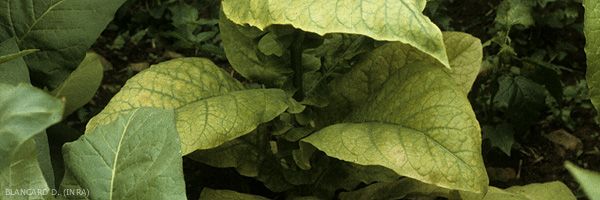
Candidatus Phytoplasma solani
Firrao et al. (2005)
Phytoplasma causing stolbur in Solanaceae
- this phytoplasma belongs to group 16Sr XII and to a phylogenetic group of stolbur
- English name : Big bud, Stolbur
Some phytoplasmas have been reported in tobacco around the world. They cause very similar symptoms, show similar epidemiological characteristics and require the same control methods. For this reason, this fact sheet will focus primarily on one example, Candidatus Phytoplasma solani. This is a phytoplasma that causes stolbur of Solanaceae, and occasionally causes serious damage in France.
Stolbur or "big bud" is a well-known tobacco disease, it was first reported in the 30's in Russia and Australia. Its presence in France dates back to 1959 when it was studied on tomato. At that time, it caused losses in tobacco in Italy, near Rome. After that, many authors observed it on other plants and weeds and identified different strains of phytoplasmas, basing on the symptoms they caused on different hosts.
Currently the distribution and impact of the stolbur agent and other phytoplasmas in tobacco-producing countries are not known. It is assumed they do not cause important damage because they are rarely reported.
In France this phytoplasma has been harmful only for the past few years. Production areas located on the Atlantic coast and the south-west were the most affected. In certain years 30 to 90% of plants were infected in some tobacco fields, especially in Vendée, Deux-Sèvres and Maine-et-Loire. Production areas located in the north, north-eastern France and Alsace did not seem to be affected. Since the serious recorded incidence between 1990 and 1992, the disease has been observed more often in tobacco plots, usually with rather low infection rates at the end of season. Unfortunately, it continues to be severe in certain tobacco areas along the Atlantic coast.





